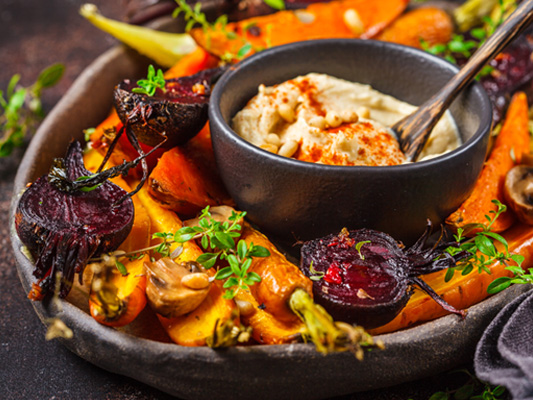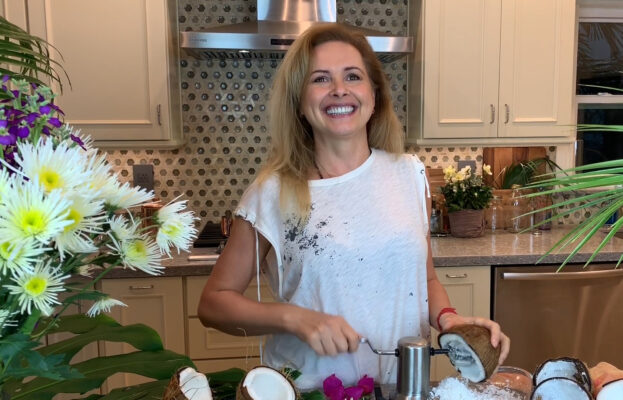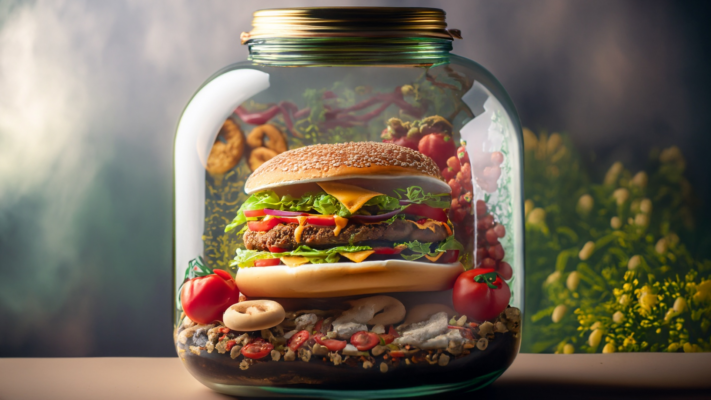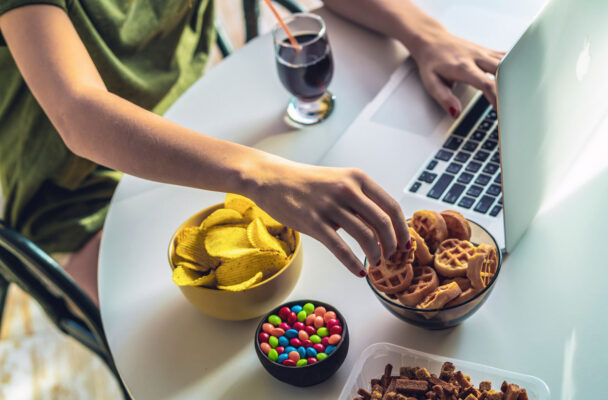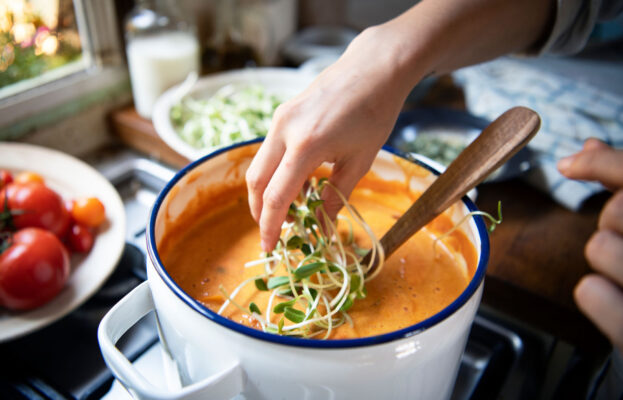The Fast and the Flavorless: Unmasking the Downside of Speed-Eating
So you know how when you’re starving, you might wolf down your food like it’s the last slice of pizza on Earth? Turns out, that speedy eating isn’t doing you any favors.
Think about it like this: your body’s like a well-oiled machine. If you dump a ton of work on it all at once, it’s bound to get a bit out of whack. Your stomach and your brain are trying to keep up a polite conversation about how full you are, but if you’re bulldozing through your meal, the message can get lost. It’s like trying to have a chat at a rock concert. That can lead to you overeating without even realizing it, sort of like accidentally buying the super-sized popcorn at the movies and finishing it halfway through the trailers.
First off, your stomach and brain need to have a little chat before you feel full. The brain is a busy guy, you know? But if you’re scarfing down that deep dish before the conversation happens, you end up eating more than you need. Over time, that could turn into some extra pounds.
Next, let’s look at chewing. I remember my grandma saying, “Chew your food 32 times before swallowing”. While that might seem a bit much, there’s truth to the idea. If you gulp down chunks of food, it’s like tossing a whole apple into a blender—it’s gonna struggle. Your stomach then has to deal with these big bits, leading to indigestion and bloating.
And heartburn? That’s not just an old wives’ tale to scare you away from late-night spicy food runs. Eating quickly can actually increase your chances of getting acid reflux, and that’s about as pleasant as getting stuck in traffic when you’re already late.
Plus, eating is supposed to be a joyride, not a drag race. When you rush through your meal, you’re missing out on savoring those flavors and textures. Think about your favorite song—you don’t just play the chorus on repeat, you enjoy the whole thing, verse to verse. When you rush through your meal, it’s like speeding through a scenic drive—you miss all the beautiful sights! Slowing down allows you to savor each bite, like lingering on each plot twist in your favorite Netflix show.
And here’s something that might surprise you—research suggests that speed-eating could potentially rev up your chances of developing serious health conditions like heart disease and diabetes. Nobody wants their health to be a ticking time bomb, so slowing down can be a real lifesaver.
So, the moral of the story? Take your time, chew your food, and enjoy your meal. Just like you wouldn’t race through a good book, don’t race through your meals.

No Need for Speed: The Unexpected Plot Twist in Your Eating Saga
- Overeating: When you eat quickly, your body doesn’t have enough time to process the signals that it’s full. This can lead to overeating, which can contribute to weight gain and obesity. (1)
- Digestive Problems: Eating too quickly can also lead to digestive problems. When you eat too fast, you’re more likely to swallow air, which can cause bloating and gas. Additionally, eating quickly often means you’re not chewing your food thoroughly, which can lead to indigestion. (2)
- Increased Risk of Metabolic Syndrome: Some studies have shown that fast eaters may be at a higher risk of developing metabolic syndrome, a cluster of conditions that increase the risk of heart disease, stroke, and type 2 diabetes. (3)
- Reduced Enjoyment of Food: Eating quickly can also reduce your enjoyment of your food. Taking the time to savor each bite can make meals more satisfying and enjoyable. (4)
- Gastroesophageal Reflux Disease (GERD): Eating quickly can increase the risk of GERD, a chronic condition where stomach acid flows back into the esophagus causing heartburn and other symptoms. (5)

Eat, Chat, Love: A Global Tour of Slow Eating Practices
Isn’t it fascinating how different cultures have unique ways of eating? Let’s chat about that, and why it might be worth hitting the brakes a bit when we sit down to a meal. Now, I promise I’m not knocking the fast-paced American way—quick bites have a snug fit in our busy lifestyles. But… every now and then, putting things on pause to enjoy our meals can be quite the game-changer that brings a whole new flavor and satisfaction.
Take the French, for example. Have you heard of ‘leisurely lunch‘? In France, meals are not just about wolfing down your food; they’re a sort of celebration. You’ll often find people taking long lunch breaks, enjoying a three-course meal with colleagues, friends, or family. The French don’t rush their meals; they relish every bite, savor every flavor. It’s like attending a food festival every single day—just imagine that! Cool, right?
Then there’s the Japanese and their Zen-like approach to eating. The traditional Japanese tea ceremony, or the ‘Way of Tea’, is a perfect example. It’s a slow, thoughtful process where every move is deliberate. The ceremony isn’t just about drinking tea; it’s a journey into mindfulness and respect. It’s akin to a ballet performance but with tea and sweets instead of music and dance. Absolutely breathtaking, don’t you think? Pretty amazing.
Over in Italy, meals are a cherished ritual. It’s not uncommon to see families gather around the table for hours, enjoying a spread of antipasti, pasta, meat, and desserts. Meals are often loud, joyful affairs, full of chatter and laughter. It’s a time when the Italian philosophy of ‘la dolce vita’, the sweet life, really comes alive. It’s like a big, warm family reunion every day. Who wouldn’t want to be a part of that?
But the Spanish folks aren’t far behind with their ‘sobremesa’, a tradition that literally means “over the table”. It’s all about the time spent lingering at the table after a meal, deep in conversation, soaking in each other’s company. Food is seen not just as fuel but as a social experience, a binding factor. It’s like having a post-meal party—every single day!
And let’s not forget the Ethiopian ‘gursha’, a tradition where people feed each other bites of food as an act of love and friendship. It’s not just about the meal; it’s about strengthening bonds, about community and sharing. It’s the edible version of a group hug!
And hey, don’t get me wrong—there’s nothing bad about grabbing a quick bite now and then. But embracing these different, more leisurely approaches to eating can be a beautiful experience. It’s about being present in the moment, really tasting and appreciating your food, and strengthening your connection with those around you. Who knew slowing down could taste so good?

The Savor Savvy: Chew More, Digest Better, Live Happier
So, you know how you’d never rush through a favorite episode of your binge-worthy TV show, right? Well, eating should be the same. Going slow has so many perks, and not just because you get to savor that perfect bite of chocolate cake.
First up, think of digestion like trying to solve a jigsaw puzzle. You wouldn’t just shove all the pieces together and hope for the best, would you? Just like how you need to fit each piece perfectly, chewing your food properly helps your body break it down and extract all the good stuff. You wouldn’t want to miss out on those nutrients, just like you wouldn’t want to miss any pieces of the puzzle.
Think about chewing your food as if it were a bit like savoring a good book. You wouldn’t just flip through the pages to get to the end, right? Taking your time to chew not only gives your mouth the satisfaction of experiencing all the changing textures and flavors, but it also helps you extract more goodness from your meal.
Here’s a fun fact: your saliva isn’t just there to make food easier to swallow; it’s a secret weapon in your nutritional arsenal. Loaded with enzymes, it starts breaking down food the moment you take your first bite, kickstarting the nutrient absorption process right there in your mouth. But those enzymes need a little time to do their job, so if you wolf down your food, you’re not giving them a chance to shine.
If you’re guilty of the eat-on-the-go routine, you’re not alone. We’ve all been there, rushing through lunch to get back to work or scarfing down dinner to catch a show. But here’s the thing: our bodies have a natural “wisdom” designed to get the most from our meals, and rushing through eats into that.
By slowing down and really chewing your food, you’re breaking it down into finer particles, which your body can process more easily. Imagine it as streamlining a job for your stomach, making the digestion process a breeze. The result? Your body can squeeze more nutrients out of less food.
So in essence, chewing well isn’t just about avoiding indigestion; it’s a way of optimizing the nutrition you get from your meals. It’s a small act of kindness you can do for your digestive system, and trust me, it’ll thank you for it. Next time you sit down to eat, take your time, savor each bite, and give your body the chance to do what it does best. It’s a win-win situation!

The ‘Slow-Charge’ Eating Method for Maximum Satisfaction
Imagine your stomach as the battery on your phone. When you’re eating, it’s like you’re charging up. Now, there are a few indicators that let you know when your ‘battery’ is full, or in other words, when you’re satisfied.
Indicator number one is the physical sensation of fullness. It’s like when your phone is connected to the charger and the battery icon starts filling up, that’s your stomach sending signals to your brain via the vagus nerve to say, “Hey, we’re getting full here.”
Next, as you start to digest, the nutrients that get absorbed into your bloodstream are like those little beeps your phone makes when it’s charging. These nutrients tell your body, “Okay, we’re getting the good stuff here. Keep going.”
Then come the hormones released from the small intestine and pancreas, like cholecystokinin, insulin, and glucagon. They’re the equivalent of those alerts you get when your phone has reached 80% or 90% charge. They’re telling you, “We’re almost full. Time to think about stopping.”
Finally, your fat cells step in, releasing chemicals like leptin that help switch off hunger. Picture them as the satisfying ‘ping’ when your phone hits 100% battery. They’re saying, “Enough’s enough. We’re charged up and ready to go.”
Now, the key to making this all work smoothly is eating slowly. Just as you can’t rush charging your phone, you can’t rush filling up your stomach. If you chew your food properly and break it down into smaller particles, your ‘battery’ can start charging earlier and you’ll hit that full signal sooner.
Remember, it takes about 20 minutes for this entire process to run its course. If you’re gobbling down your meal too fast, you could easily ‘overcharge’ before your body has time to send the full signal. It’s a bit like using a supercharger—it might be faster, but it’s not always the best for your battery in the long run.
Mindfulness is a bit of a buzzword these days, isn’t it? But here’s the thing—it’s like being the star of your own show rather than a background character. When you eat slowly, you’re paying attention to your body’s cues and signals. It’s about knowing when you’re hungry, when you’re full, and what your body needs.
So next time you sit down for a meal, remember to take it slow. Treat your stomach like a battery you want to keep in peak condition. Slow down, savor each bite, and give your body time to ‘charge’ properly. Your body will thank you for it because slow eating is about relishing the process. It’s better for your body, your mind, and heck, it makes food taste better. What’s not to love? Now, slow down and pass the gravy, please!

Putting the Brake on Your Bite: The Perks of Slow Eating
Eating slowly has a multitude of benefits that go beyond just enjoying your meal. Here are some of the advantages:
- Better Digestion: Your digestive process begins in the mouth, so taking the time to thoroughly chew your food helps your body break it down more effectively. This can lead to better nutrient absorption and fewer digestive issues.
- Weight Control: It takes about 20 minutes for your brain to register that you’re full. Eating more slowly allows your body time to recognize when you’ve had enough, which can help prevent overeating and contribute to weight management. It’s like your brain is casually scrolling through social media—it needs about 20 minutes to catch up and hit the “like” on your stomach’s “I’m full” status. So, going slow helps you recognize when you’ve had enough, much like knowing when to put down your phone and go to bed.
- Savor the Flavor: Rushing through a meal doesn’t give you time to truly taste and enjoy your food. Eating slowly lets you savor each bite and appreciate the flavors more fully. Imagine walking through an art gallery at a sprint—you’d miss the beautiful details, right? It’s the same with your food. Slow down, savor each bite, and let the flavors dance on your taste buds.
- Mindfulness: Eating slowly encourages you to be more mindful, not just about what you’re eating but about your body’s hunger and satiety cues. This can lead to a healthier relationship with food and eating.
- Reduced Stress: Slowing down and being present during your meal can create a calming ritual, reducing stress and improving overall wellbeing. And did you know that slow eating can be like a mini meditation session? Yeah, it’s like a spa for your mind right there at the dinner table. Relax, enjoy your food, let the day’s stress melt away.
- Social Benefits: If you’re eating with others, slowing down can make meals a more social and enjoyable occasion. Remember those long, fun dinners with friends where you chatted, laughed, and just enjoyed the moment? Slow eating can turn every meal into an occasion, even if it’s just a Tuesday night dinner.
So, by eating more slowly, not only can you have a more enjoyable meal, but you can also do a favor to your body and mind. It’s a win-win situation!
PRACTICES
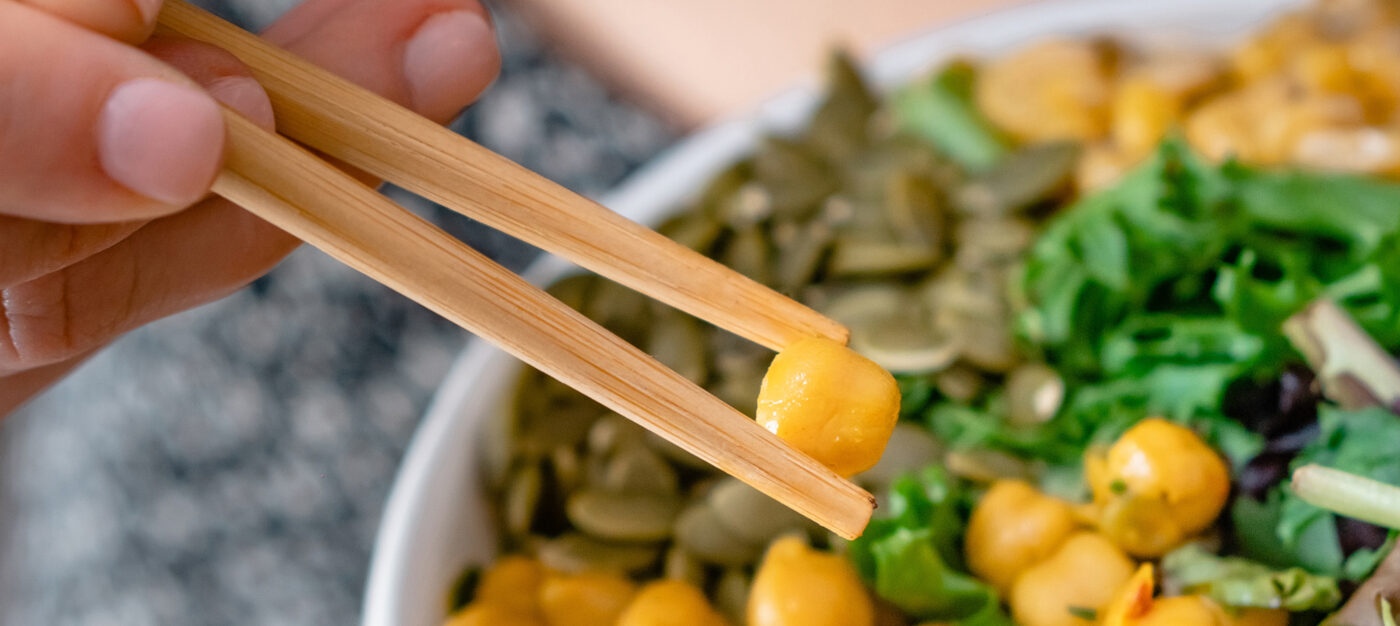
By incorporating these practices into your eating routine, you can cultivate mindfulness, deepen your connection with food, and enhance your overall well-being. Each practice offers its own unique benefits and opportunities for self-discovery.
The Art of Savored Sustenance
This practice was developed to transform your eating and drinking into a mindful, slow-paced experience. We’re aiming to introduce some pauses into the process, making every meal a mindful moment.
- First, before you delve into your meal, let’s take a moment to pause. Direct your attention to the food in front of you. Observe the array of colors, notice the textures, and appreciate the shapes. Take in the visual presentation on your plate or in your bowl.
- Next, let’s express gratitude. Take a moment to acknowledge and thank the animals, plants, and all the individuals involved in bringing this meal to your table. As you partake in your food, remember their contributions and the interconnectedness of our food system.
- Now, before you take your first bite, take a deep breath. Inhale deeply and let the aroma of your food fill your senses. Imagine that the fragrance itself is nourishing you, awakening your taste buds and preparing your body for the experience.
- Imagine yourself as a connoisseur, like someone tasting a fine wine. Begin by bringing the food closer to your nose, relishing the aroma. Then, take a small bite and allow it to linger in your mouth. Notice and savor every flavor. Can you distinguish the individual ingredients? Chew slowly and mindfully, appreciating the texture and taste. When you’re ready, swallow and take a moment to feel the nourishment spreading through your body. Rinse your palate with some water, cleansing your senses, and preparing for the next bite. Repeat this process with each subsequent bite.
If you find yourself slipping into mindless eating, don’t worry—it happens to all of us. When you notice this, simply hit the pause button. Take another look at your food, reestablish your connection with the present moment, and realign with the mindful practice.
Keep in mind, eating is not just about filling your stomach—it’s a sensory journey that nourishes your body and mind. Let’s make the most of this opportunity to cultivate mindfulness and appreciation with each meal.
Potential Benefits:
- Enhanced appreciation: By pausing before diving into your meal, you allow yourself to truly appreciate the colors, textures, and presentation of your food. This heightened awareness brings a sense of gratitude and enjoyment to each meal.
- Mindful presence: Taking a deep breath and immersing yourself in the aroma of your food helps you become fully present in the moment. It awakens your senses and prepares your body and mind for the eating experience ahead.
- Sensory exploration: Engaging in a mindful tasting experience, like a connoisseur, allows you to savor and identify the different flavors and ingredients in your food. It brings a new level of enjoyment and mindfulness to the act of eating.
- Conscious eating: By practicing mindful pauses, you interrupt the autopilot mode of mindless eating and bring intentionality to each bite. This helps to foster a healthier relationship with food and promotes mindful consumption.
- Reconnecting with the present moment: If you find yourself slipping into mindless eating, the practice encourages you to hit the pause button, reconnect with the present moment, and realign with the mindful practice. It serves as a gentle reminder to stay present and engaged during your meals.
Chew & You: Making the Most of Every Bite
This practice encourages you to savor your food by chewing each bite thoroughly and paying attention to your body’s reactions.
- Begin by taking a bite of your food. As you chew, aim to chew each bite at least fifteen to thirty times before swallowing. Counting the chews can help you stay focused and mindful of the process.
- Pay close attention to the changes in texture as you chew. Observe how the food transforms in your mouth and notice any sensations or reactions that arise. Be fully present in the experience of chewing.
- Also, observe your reaction to the time it takes to eat this way. Are you becoming more patient and present with your meal? Take note of any changes in your mindset or overall experience.
- Start by incorporating this mindful chewing practice into a part of one meal each day. As you become more accustomed to it, you may naturally find yourself chewing all your food more thoroughly. Let the practice unfold at a pace that feels comfortable for you.
- Keep in mind when you find yourself feeling extremely hungry, it becomes even more crucial to eat mindfully. During these moments, deliberately slow down your pace and chew each bite well before swallowing. As you swallow, silently express gratitude to your body by saying, “Dear body, now I’m sending you a present, something very good.”
- Observe how the feeling of almost desperate hunger changes as you eat mindfully. Notice when it begins to dissipate or transform. Cultivate awareness around the connection between your eating pace, mindful chewing, and your body’s hunger signals.
By practicing Mindful Chewing, you can develop a deeper connection with your body’s hunger and fullness cues, enhance your overall eating experience, and cultivate a more nourishing relationship with food.
Potential Benefits:
- Enhanced digestion: Thoroughly chewing each bite allows for better digestion and nutrient absorption. It promotes mindful eating by slowing down the pace and allowing your body to process and assimilate nutrients more effectively.
- Heightened awareness: Mindful chewing brings your attention to the texture, flavor, and overall experience of each bite. It deepens your sensory connection with the food, enhancing your overall eating experience.
- Hunger and fullness cues: By chewing mindfully, you become more attuned to your body’s hunger and fullness signals. This helps you recognize when you’re truly satisfied, preventing overeating and promoting healthier portion control.
- Mindful living extension: Practicing mindful chewing expands beyond the dining table. It encourages a slower, more intentional approach to life, fostering a sense of mindfulness and presence in various aspects of your day-to-day experiences.
- Appreciation for food: Mindful chewing cultivates a deeper appreciation for the nourishment and sustenance that food provides. It allows you to savor the flavors and textures, creating a more gratifying and fulfilling eating experience.
Sip Sensations: Letting Flavor Flow
Let’s be honest, we’ve all been guilty of gulping down our drinks without really tasting them, haven’t we? This means we often miss out on truly savoring the flavors and we might even end up drinking more as we chase that satisfaction. But hey, it doesn’t have to be this way. We can bring a dash of mindfulness to our drinking experiences too, and here’s how:
- Take it Slow. Instead of rushing through your drink, allow each sip to linger in your mouth before swallowing. Let it swirl around, engaging all your taste buds, soaking up all the flavors. Picture it as a slow-mo scene in your favorite movie, where every detail, every nuance gets its moment in the spotlight. Each sip is your personal slow-motion sequence, make it count. 🎬.
- Put your drink down between sips. After you’ve had a sip and swallowed it, place your drink down for a moment. Let your mouth feel empty and the lingering taste fade away before going for the next sip. 🏁
By bringing these mindful drinking techniques into play, you’ll start to really appreciate the flavors and textures of your drinks. It’s a fantastic way to treat your senses and introduce a slice of mindfulness into your daily hydration habits. So, here’s a toast to a more mindful and joyful drinking experience. Cheers!
Potential Benefits:
- Mindful enjoyment: Taking it slow and savoring each sip allows you to fully appreciate the flavors and sensations of your drink. It brings a sense of pleasure and indulgence to your hydration routine.
- Sensory exploration: By consciously engaging with your drink, you heighten your sensory experience. You become more attuned to the taste, aroma, and texture, allowing you to discover and appreciate the nuances of different beverages.
- Mindful hydration: This practice encourages you to be present and attentive while drinking, ensuring that you stay hydrated and nourish your body adequately throughout the day.
- Intentional consumption: Putting your drink down between sips introduces moments of pause and reflection. It breaks the habit of mindless drinking and promotes a more intentional and mindful approach to consumption.
- Mind-body connection: By incorporating mindfulness into your drinking habits, you strengthen the mind-body connection and foster a greater sense of well-being.
Intermissions: Master the Pause and Feel the Eating Rhythm
Let’s explore a simple yet effective technique to slow down and truly savor our meals – simply by putting down the fork or spoon between bites. Here’s how:
- After you take a bite, gently set down your utensil, be it a fork, spoon, or chopsticks. Let it rest there on your plate or in your bowl, just for a moment, while you fully chew and enjoy the taste of your food.
- This is your time to truly engage with the flavors unfolding in your mouth. Consider closing your eyes to fully immerse yourself in the taste and texture of your food.
- Once you’ve thoroughly savored the bite, it’s time to pick up your utensil again, serve another helping onto your fork or spoon, and repeat. This mindful rhythm of eating creates an intentional pause between each bite.
- Throughout this practice, stay tuned into your thoughts and feelings. Notice any changes or impulses that arise from these pauses in your meal. Pay attention to any emotions, judgements, or sensations that may emerge.
By simply setting down your utensil between bites, you create a mindful eating experience that engages all your senses. It’s a chance to truly appreciate your meals, deepen your connection with your food, and tune into your body’s needs. Let’s make mealtime a journey of mindful discovery with every bite we take.
Potential Benefits:
- Mindful eating: Pausing between bites and setting down your utensil allows you to cultivate a more mindful eating experience. It brings a sense of presence, intention, and gratitude to your meals.
- Enhanced awareness: By taking breaks and savoring each bite fully, you become more aware of the flavors, textures,
- and sensations present in your food. This heightened awareness deepens your connection with the nourishment you’re providing your body.
- Portion control: Pausing between bites and setting down your utensil helps regulate your eating pace. This allows your body to recognize feelings of satiety more accurately, preventing overeating and promoting healthier portion control.
- Mindful satisfaction: By fully savoring each bite and taking intentional pauses, you give yourself the opportunity to experience a greater sense of satisfaction from your meals. This can reduce the urge for unnecessary snacking or reaching for second helpings.
- Mind-body connection: The practice of intermissions fosters a stronger mind-body connection during mealtimes. By tuning into your body’s signals and respecting its natural rhythms, you can develop a deeper understanding of your hunger and fullness cues.
- Mindfulness beyond the plate: Embracing pauses and finding a rhythmic flow in your eating extends beyond mealtime. It encourages you to bring moments of pause and reflection into other areas of your life, fostering a more mindful and intentional way of being.
Switch It, No Need to Dominate
Eating with your nondominant hand! It’s a simple switch that can bring a whole new level of awareness to your meals. Here’s how you can give it a try:
- Deliberately use your non-dominant hand to eat for a designated period, like one week. So, if you usually hold the fork with your right hand, switch it up and use your left hand instead. Trust me, the experience can be quite amusing and even make you giggle!
- As you embark on this practice, observe what unfolds. Notice the differences in coordination, the adjustments you make, and the sensations that arise when using your non-dominant hand. Embrace the lightheartedness and playfulness that comes with the switch.
- What started as a mindfulness exercise for me eventually became a daily habit. One reason is that it serves as a way to strengthen my left hand. I see it as proactive preparation in case I ever have a stroke, given the history in my family. It’s like giving my right brain a workout while planning for the future.
By embracing the challenge of eating with your nondominant hand, you not only cultivate mindfulness but also engage in an enjoyable exercise that can strengthen neural connections and enhance coordination.
Potential Benefits:
- Mindful awareness: Eating with your nondominant hand or switching hands challenges your usual eating habits and brings a heightened sense of awareness to your meals. It encourages you to be more present, attentive, and engaged in the act of eating.
- Coordination and brain stimulation: Using your nondominant hand or switching hands during meals can improve coordination and stimulate neural connections in the brain. It challenges your brain’s accustomed patterns and fosters adaptability.
- Mindful preparation: The practice of switching hands can serve as proactive preparation for potential future scenarios, such as stroke or other conditions affecting your dominant hand. By strengthening your nondominant hand, you promote overall dexterity and resilience.
- Playfulness and enjoyment: Embracing the challenge of switching hands adds an element of fun and playfulness to your eating experience. It can bring a sense of joy and lightheartedness to your meals, turning them into a delightful and engaging activity.
- Mindful adaptability: Switching hands invites flexibility and adaptability into your daily routines. It encourages you to step out of your comfort zone and embrace new ways of approaching familiar tasks, fostering a mindset of openness and growth.
Eating with Chopsticks
Eating with chopsticks 🥢 This practice is designed to help us slow down, be more attentive to each bite, and cultivate a sense of mindfulness during meals. It works wonders, especially if we’re not accustomed to using chopsticks. Here’s how you can bring this practice into your eating routine:
- Embrace the challenge of using chopsticks, especially if you’re not skilled in using them. The unfamiliarity of the utensil helps to naturally slow down your eating pace. It’s fascinating to think that this could be one of the reasons why obesity was historically less prevalent in Asia.
- Grabbing a bowl of ice cream with chopsticks might sound impossible, and that’s the beauty of it! Using chopsticks encourages us to eat more mindfully, making it difficult to wolf down our food quickly. It allows us to savor each bite and be fully present in the eating experience.
- For those who are already proficient in using chopsticks or are up for a double mindfulness challenge, try eating with your non-dominant hand using chopsticks. This adds an extra layer of mindfulness and engagement to your mealtime. Alternatively, you can also experiment with putting the chopsticks down between bites, creating moments of pause and reflection.
By incorporating chopsticks into your eating routine, you invite a sense of mindfulness, attention, and intention to your meals. Whether you’re a beginner or an expert, this practice can bring a delightful twist to your dining experience. So, grab those chopsticks, embrace the challenge, and savor each bite mindfully!
Potential Benefits:
- Mindful pace: Eating with chopsticks naturally slows down your eating pace, allowing you to be more attentive and present with each bite. This mindful approach helps you fully savor the flavors, textures, and nuances of your food.
- Heightened awareness: The challenge of using chopsticks, especially if you’re not accustomed to them, brings a heightened sense of awareness to your meals. It encourages you to pay closer attention to your food, promoting a deeper connection with your senses.
- Mindful portion control: With chopsticks, it becomes more challenging to grab large mouthfuls of food. This can support portion control and mindful eating, as you take smaller, deliberate bites and become more attuned to your body’s satiety signals.
- Cultural appreciation: Embracing chopsticks allows you to connect with the cultural traditions of Asian cuisine. It offers a wonderful opportunity to appreciate and experience food in a new and culturally diverse way.
- Mind-body coordination: Using chopsticks engages your fine motor skills and hand-eye coordination. With practice, you can enhance your dexterity and coordination, promoting a greater mind-body connection.
By incorporating chopsticks into your eating routine, you open up a gateway to mindful eating and a richer sensory experience.
Be Alive 🌱
Love ❤️, Julia
Mindful Eating 🥢
Mindful Eating Meditation
GUIDED MEDITATIONS 💗
DISCLAIMER: The materials and the information contained on the Positive Pranic website are provided for general and educational purposes only and do not constitute any legal, medical, or other professional advice on any subject matter. None of the information on our videos is a substitute for a diagnosis and treatment by your health professional. Always seek the advice of your physician or other qualified health providers prior to starting any new diet or treatment and with any questions you may have regarding a medical condition. If you have or suspect that you have a medical problem, promptly contact your health care provider.



